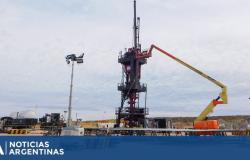-
Mission engineers need more time to make sure the spacecraft is ready to return to Earth
-
In addition to the five helium leaks, a valve responsible for isolating the Starliner’s oxidizer does not close properly.
June 18, 2024, 7:18 p.m.
Updated June 18, 2024, 7:25 p.m.
Five helium leaks, a booster that won’t start and a valve that won’t close complicate the return of Boeing’s Starliner ship to dry land.
New return date. The first manned test of the Starliner spacecraft is not going as Boeing or NASA expected. Astronauts Butch Wilmore and Suni Williams were going to spend eight days at the International Space Station, but NASA has already delayed the capsule’s undocking and return maneuver three times.
Steve Stich, who leads NASA’s commercial flight program, announced this Tuesday that the planned date for the return of astronauts is now June 26, with a second return window for July 2 and successive windows every four days.
The reasons for the delay. Once again, the reason given by NASA for postponing the return of the Starliner is to give the team more time to analyze the problems detected and ensure that the ship is ready to return to Earth safely for its crew.
The failures that complicated the docking of the Boeing spacecraft to the International Space Station are related to the service module, a component that burns up in the atmosphere and is not recovered, so collecting as much data as possible not only ensures the safety of Butch and Suni, but will be crucial to fixing the ship’s defects before it enters service for NASA.
Helium leaks and thruster failures. Although the Starliner arrived at the International Space Station without putting the crew at risk, it did so with five helium leaks (two of which were detected after docking) and the failure of five RCS system thrusters.
Although four of the five boosters (located in the aft area of the ship) were recovered, Boeing has admitted that the ship’s helium collectors and seals are not working as they should. Fortunately they are small leaks. The ship still has helium for 70 hours of flight, but it only needs seven to deorbit.
A valve that does not close. NASA has also announced a problem unrelated to helium and propellant leaks: a valve responsible for isolating the Starliner’s oxidizer does not close correctly.
The propellants need to be well sealed to return, something Boeing can solve with a secondary valve, but the spacecraft’s engineers will have to analyze the extent of this problem to understand what it means for subsequent flights.
Butch and Suni are happy. Something that NASA wanted to make clear in a press conference about the new delay is that the astronauts are delighted with the Starliner and the prospects of spending a few additional days aboard the International Space Station.
Butch Wilmore and Suni Williams are 61 and 58 years old, respectively. The Starliner’s first test mission is probably its last space mission. Once the ship undocks, it is scheduled to land in the White Sands desert, in the state of New Mexico.
Image | POT
In Xataka | Boeing said the Starliner could safely withstand up to five helium leaks. Just found the fifth






